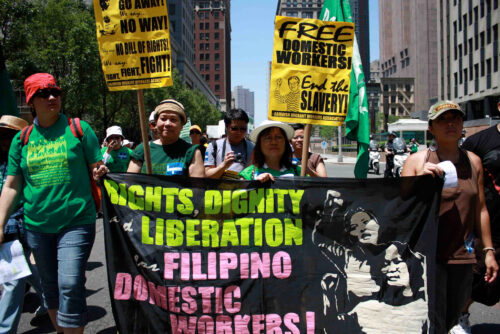Iris Lopez participated in “Global Dimensions of ART,” a panel discussion at The Scholar & Feminist Conference 2009, “The Politics of Reproduction: New Technologies of Life,” held on February 28 at Barnard College in New York City.
Listen to a podcast of “Global Dimensions of ART.”
Reproductive technologies have enabled millions of infertile couples to have children. While assisted reproductive technologies such as in vitro fertilization and surrogate motherhood can be beneficial, they have also been criticized as privileging the nuclear family, being pro natalist, and expensive, therefore inaccessible to the poor.1 A key concern raised at the Scholar & Feminist Conference at Barnard College (February 28, 2009) was that we should provide reproductive technology to marginalized women, and the question posed was how do we go about doing it? The implicit assumption of this question is that reproductive technology is positive, or at least neutral, and therefore all women and men should have equal access to it.
Prior to addressing the important question of equality through accessibility, I believe broader questions need to be raised about what makes the technology valuable (or harmful) to users. Reproductive technology does not exist in a vacuum. It is used within a social context of power relations based on the intersections of race, class, gender, and sexual orientation.2 The use of reproductive technology therefore raises ethical concerns that must be explicitly addressed. The goals of my paper are first to challenge the technocratic ethos that would readily apply any and all reproductive technologies to women’s lives, and second to examine the ethical implications of how technologies are actually used in specific contexts. In whose interest is it to use this technology in this context? Is it democratic, ethical, non-coercive, and used for the greater good? Is it respectful of women’s desires, or is it imposed upon women in the interests of those with more power?
My work is situated in a reproductive justice framework, exemplified by groups such as Latina Institute for Reproductive Health, The Caribbean Initiative on Abortion and Contraception, California Latinas for Reproductive Justice, SisterSong, DAWN and Asian Communities for Reproductive Justice as well as scholarly work such as Rosalind Pollack Petchesky’s cutting edge international research on reproductive rights.3 I seek to transcend a binary agent/victim perspective, develop an integral interpretation that gives voice to what women think and need, and contextualize women’s fertility experiences within a critical cultural, social, and historical framework. I aim to make my research available to Puerto Rican women and other communities who strive for reproductive and social justice and to work with them in creating a better society.
In this paper I limit my discussion of the ethics of reproductive technology to female sterilization (tubal ligation), which has been used in Puerto Rico since the 1930s. Puerto Rican women have one of the highest rates of sterilization of any population/community.4 The explanations for the high rate of sterilization among Puerto Rican women have traditionally been conceptualized in a binary framework. One school of thought argues that Puerto Rican women are active agents who make voluntary decisions, and therefore exercise reproductive freedom.5 The other school advocates that Puerto Rican women are victims of sterilization abuse.6 My research reformulates this oppositional framework. I reject the notion that Puerto Rican women are either voluntary agents or powerless victims because neither of these poles presents an adequate picture of most Puerto Rican women’s reproductive experiences. I propose a third model, an integral model of reproductive freedom and social justice that allows us to situate agency, resistance, choice, and constraints in the broader socio-political and historical framework that is based on race, class, and ethnicity.7
Sterilization is the most popular method of fertility control in the 21st century.8 In most cases, both female sterilization (tubal ligation) and male sterilization (vasectomy) renders an individual incapable of having more children. As a reproductive technology, sterilization is neither good nor bad; its ethical status depends on how it is used. An integral analysis sheds light on how reproductive technologies such as sterilization can be both harmful as well as beneficial to women depending on their historical, personal, cultural, and social conditions. For example: the sterilization policy developed out of a legacy of colonialism, eugenics, and neo-Malthusian ideologies that supported population control in Puerto Rico based on the idea that only the “fit” should reproduce.9 However, as my research reveals, a significant number of Puerto Rican women accepted and even actively sought sterilization because it enabled them to control their fertility, which they were desperate to do. This was especially true during the early part of the 20th century when temporary methods of birth control were not readily available to Puerto Rican women on the island.
I anchor my discussion of the ethics of sterilization in a 25-year study that I undertook of Puerto Rican women that shows how sterilization, originally a method of population control in Puerto Rico, was adopted as a popular method of fertility control partially by the women themselves. My study focuses on Puerto Rican women living in New York, whom I term the first, second, and third generations. These are the mothers, daughters, and granddaughters in the households I followed. As the stories I relay below demonstrate, even poor, racialized women who were targeted by population control strategies sometimes sought out or welcomed sterilization, and derived benefits from it.
- D. Roberts, Killing the Black Body: Race, Reproduction, and the Meaning of Liberty (New York: Pantheon Books, 1997). [↩]
- I. Lopez, Matters of Choice: Puerto Rican Women’s Struggle for Reproductive Freedom (New Brunswick: NJ: Rutgers University Press, 2008); L. Mullings, “Resistance and Resilience: The Sojourner Syndrome and the Social Context of Reproduction in Central Harlem,” in Gender, Race, Class, and Health: Intersectional Approaches, Amy J. Schulz and Leith Mullings, eds. (San Francisco, CA: Jossey-Bass, 2008): 345-370; and Roberts, 1997. [↩]
- R.P. Petchesky, Global Prescriptions: Gendering Health and Human Rights (New York: Zed Books, 2003). R. Petchesky and K. Judd, eds, Negotiating Reproductive Rights: Women’s Perspectives Across Countries and Cultures (London and New York: Zed Books, 1998). [↩]
- Lopez, 2008; I. Lopez (1983), “Extended Views: Social Coercion and Sterilization Among Puerto Rican Women,” in Sage Relations 8 (3): 27-40. I. Lopez (1998), “An Ethnography of the Medicalization of Puerto Rican Women’s Reproduction,” in Pragmatic Women and Body Politics, ed. M. Lock and P.A. Kaufert, 240-259 (Cambridge, UK: Cambridge University Press). I. Lopez (1993), “Agency and Constraint: Sterilization and Reproductive Freedom Among Puerto Rican Women in New York City,” in Urban Anthropology and Studies of Cultural Systems 22 (3-4): 299-343. [↩]
- H.B. Presser, H.B, Sterilization and Fertility Decline in Puerto Rico (Westport, CT: Greenwood Press, 1973); and J.M. Stycos, R. Hill, and K. Back, The Family and Population Control: A Puerto Rican Experiment in Social Change (Chapel Hill: University of North Carolina Press, 1959). [↩]
- B. Mass, “Emigration and Sterilization in Puerto Rico in Population Target: The Political Economy of Population in Latin America,” Toronto: Latin American Working Group, 1976: 66-95; and CESA, “Workshop on Sterilization Abuse,” Bronxville, NY: Sarah Lawrence College, 1976; and A.M. García, 1982. La Operación. Directed and produced by Ana María García with Latin America Film Project. New York: Cinema Guild [↩]
- Lopez, 2008. [↩]
- A. Chandra, “Surgical Sterilization in the U.S.: Prevalence and Characteristics, 1965-95,” Department of Health: Vital Statistics 23.20 (1998): 1-33. [↩]
- L. Briggs, Reproducing Empire: Race, Sex, Science, and U.S. Imperialism in Puerto Rico (Berkeley: University of California Press, 2002); and García, 1982. [↩]




